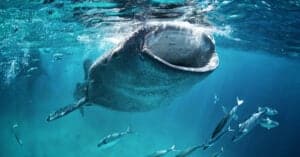California is home to beautiful beaches, snowy mountains, and everything in between. For aquarium lovers, one of the best things to see in this magnificent state is the Aquarium of the Pacific. It’s Southern California’s largest aquarium and is home to many beautiful and captivating creatures. With so many captivating animals in store, it’s best to have a bit of a game plan before embarking on this journey to see some of the coolest animals California has to offer.
The best time to visit is around 3:00 p.m. for the quietest, most relaxing experience. This will allow viewers to see the sights without feeling rushed or pushed out due to crowds.
The animals at the aquarium can broken into three sections: the Tropical Pacific, Northern Pacific, and Southern California Galleries. The Southern California Gallery is a new section of the aquarium. All of these areas, along with touch-tanks and mini exhibits, will take you on a tour of the strange and curious world that is oceanic life. Keep reading to get an idea of some of the coolest animals there are to see.
Giant Pacific Octopus
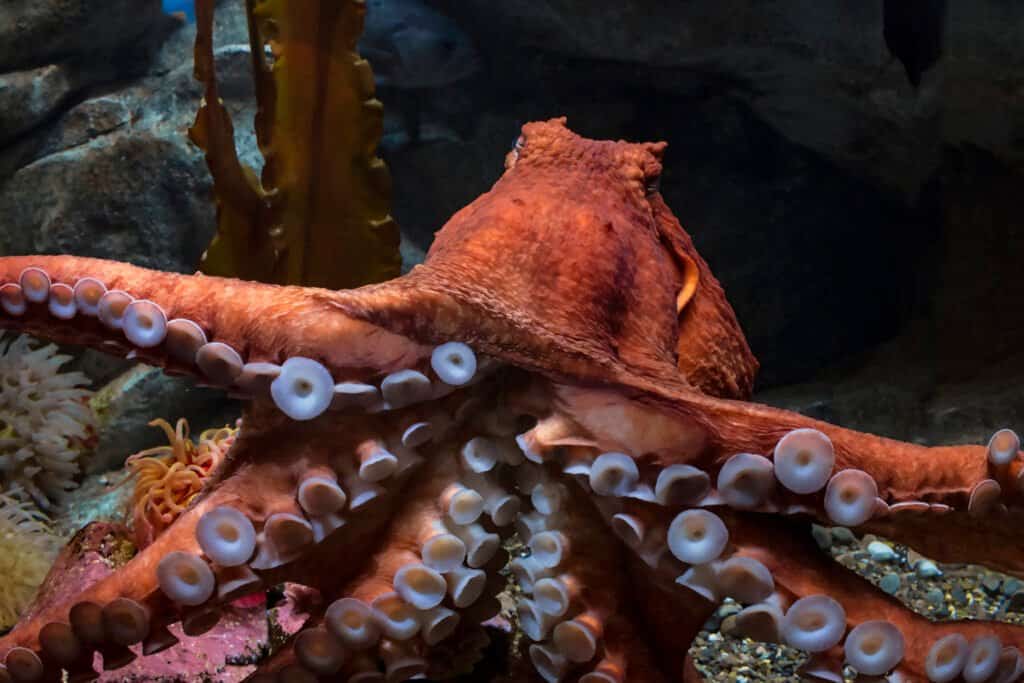
This octopus can have over 2,000 suction cups on their arms which gives them
extra grip strength but also a sense of smell and taste
.
©karen crewe/Shutterstock.com
The giant Pacific octopus (Enteroctopus dofleini) is located in the Northern Pacific Gallery area of the aquarium. They are also one of the longer-lived octopus species with a three to five-year life span. These are some of the coolest creatures around not only because of their size but also their intelligence. This species of octopus can reach up to 16 feet in length and weigh up to 110 pounds! Additionally, they can open jars and solve simple puzzles. Not bad for an invertebrate!
Sea Otters

Groups of sea otters are called “rafts”. They usually will consist of 12-100 or more individuals!
©Kyle Moon/ via Getty Images
Everyone loves a sea otter. They’re cute and lively animals that, interestingly, belong to the weasel family. The Southern sea otter (Enhydra lutris nereis) is in the Sea Otter Habitat in the Northern Pacific Gallery. When you’re observing these animals, you might see them cleaning themselves very frequently. This cat-like grooming obsession is crucial to keeping their fur healthy and in good shape. Sea otters rely on this fur to insulate their body heat as they lack a layer of blubber.
Magellanic Penguins
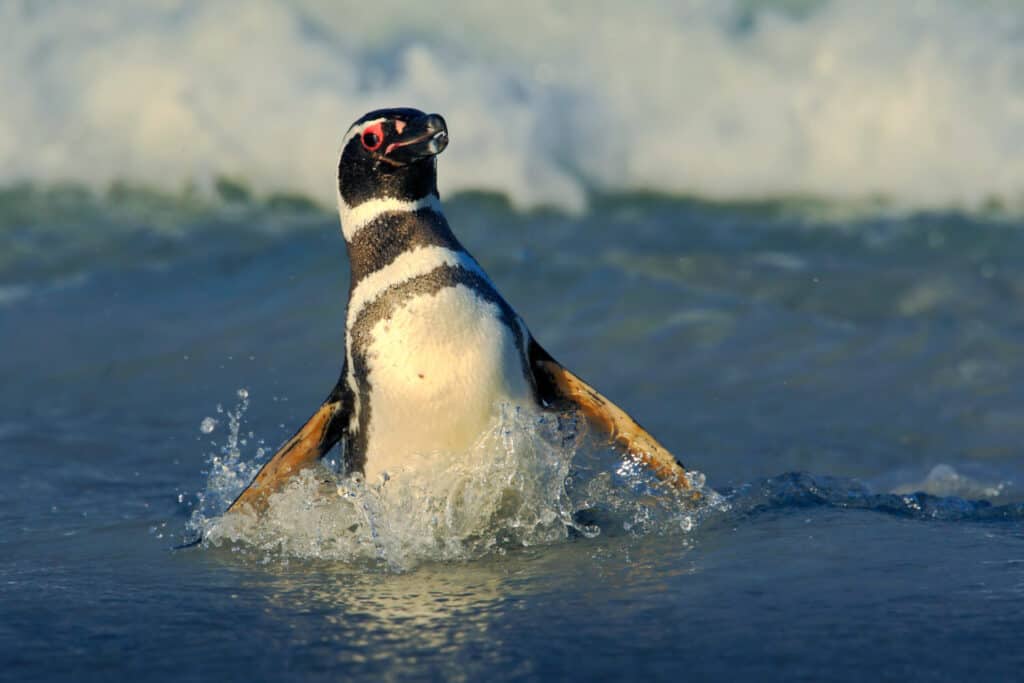
Most penguins don’t perceive the color red, as this is not a color abundantly found in their environment.
©Ondrej Prosicky/Shutterstock.com
The Aquarium of the Pacific houses 20 Magellanic penguins (Spheniscus magellanicus) in the June Keyes Penguin Habitat. The inhabitants of the penguin habitat are rescues from captive breeding situations while some come from the wild. In captivity, this species of penguin can live up to 35 years compared to the 20 years they might get in the wild.
If you make your way to the June Keyes Penguin Habitat, check out this list that gives you the names and some information on how to identify each specific penguin.
Pacific Sea Nettle
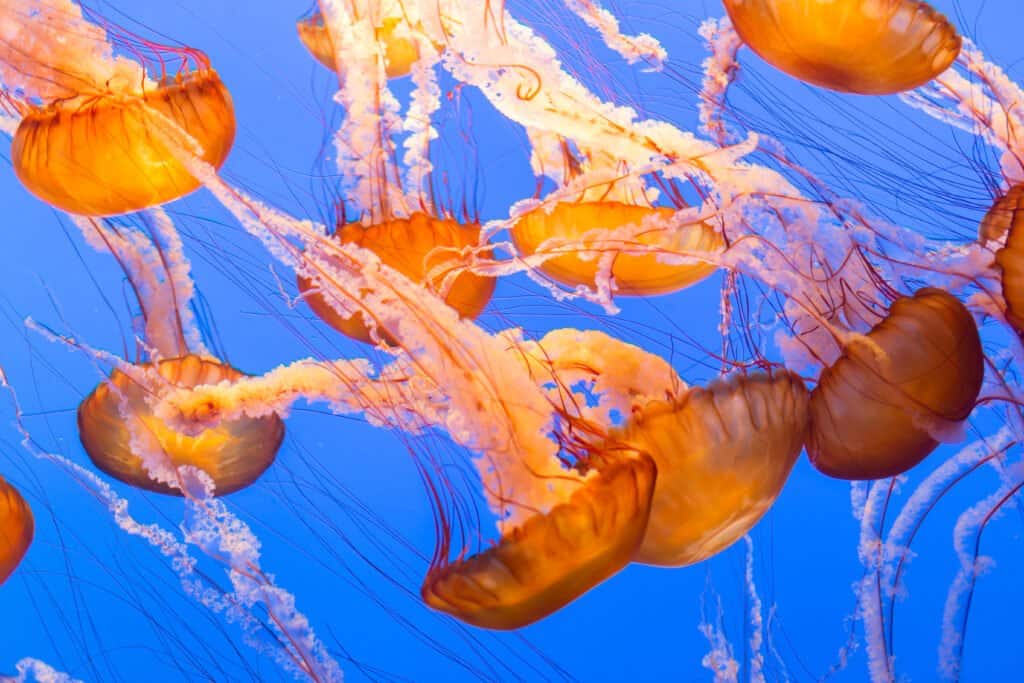
The Pacific sea nettle lives to be only a year old on average.
©Ken Wolter/Shutterstock.com
This might be one of the most picturesque jellyfish available for viewing. Their bright pink-orange color and long arms can reach up to 15 feet in length, though they’re usually closer to 3 feet. The Pacific sea nettle (Chrysaora fuscescens) is a carnivorous jellyfish. It feasts upon other jellies, fish eggs, and snails.
You can find the Pacific Sea Nettle and some other cool jellyfish and jelly-like animals in the Northern Pacific Gallery.
Common Octopus
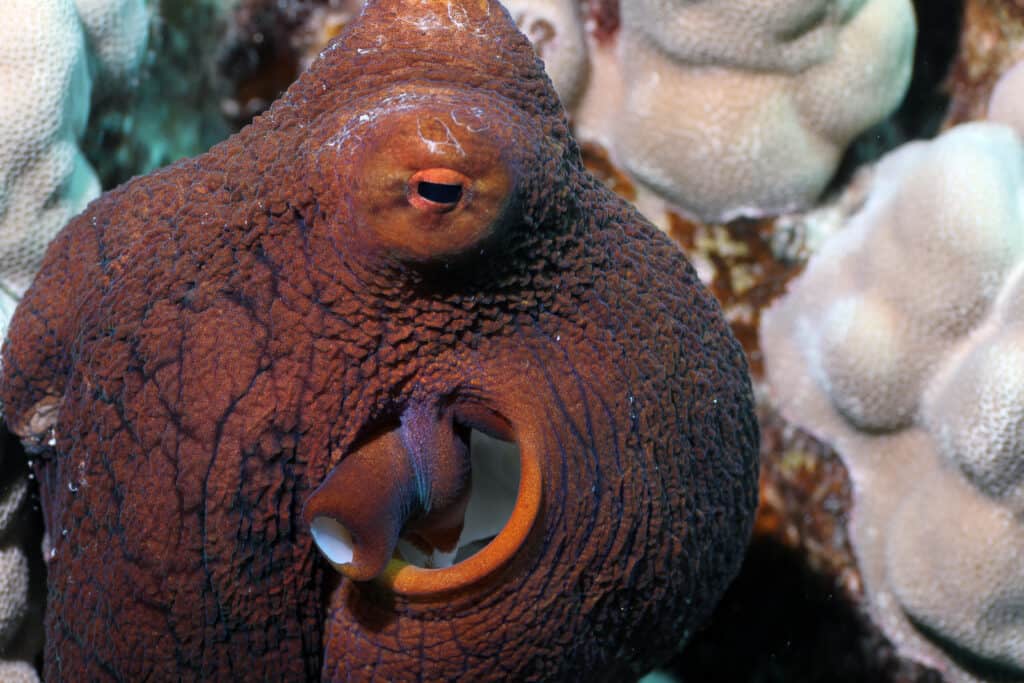
The raised eyes on top of their heads give these mollusks very good eyesight.
©Marty Wakat/Shutterstock.com
The common octopus (Octopus cyanea) might be most familiar to those who are fans of nature documentaries. This octopus is known for changing its colors quicker than you can see to disguise itself in its surroundings. The color-changing magic is thanks to chromatophores in their skin, which can also also change the texture to help it blend in even more. You can find this octopus in the Tropical Pacific Gallery, but only if you have a keen eye!
Green Sea Turtle
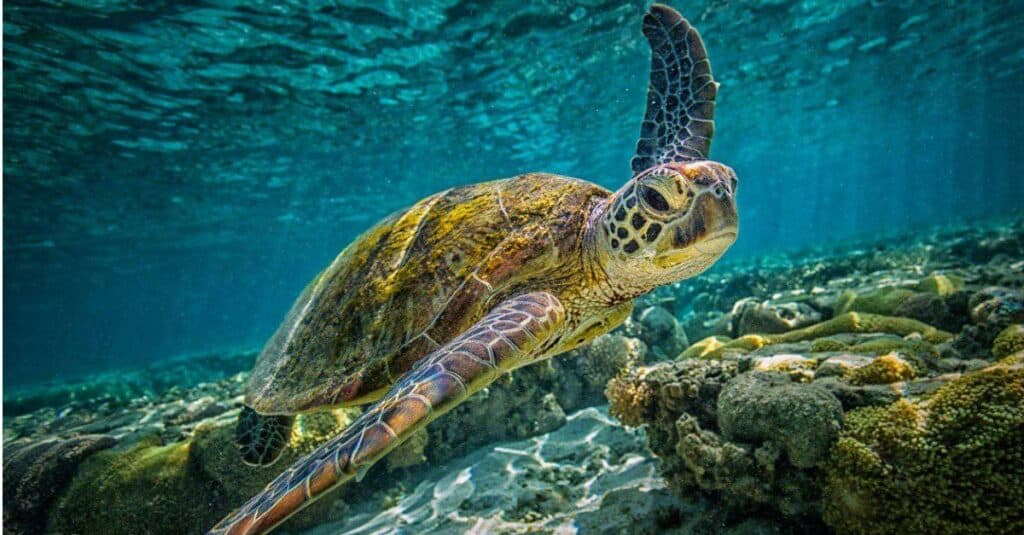
Green sea turtles can hold their breath for up to seven hours.
©iStock.com/Greg Sullavan
This long-lived and large turtle can reach up to 440 pounds and 4 feet in length. This makes it the second-largest sea turtle species behind the leatherback. Some experts say the true lifetime length of this species is unknown. However, its average life span could be upwards of 80 years.
Unfortunately, this species of sea turtle is endangered. Human-related activity such as egg harvesting and nesting ground destruction has led to the decline of the green sea turtle in the wild.
The awe-inspiring size and majesty of these turtles can be admired in the Tropical Reef habitat in the Tropical Pacific Gallery of the aquarium.
Flashlight Fish
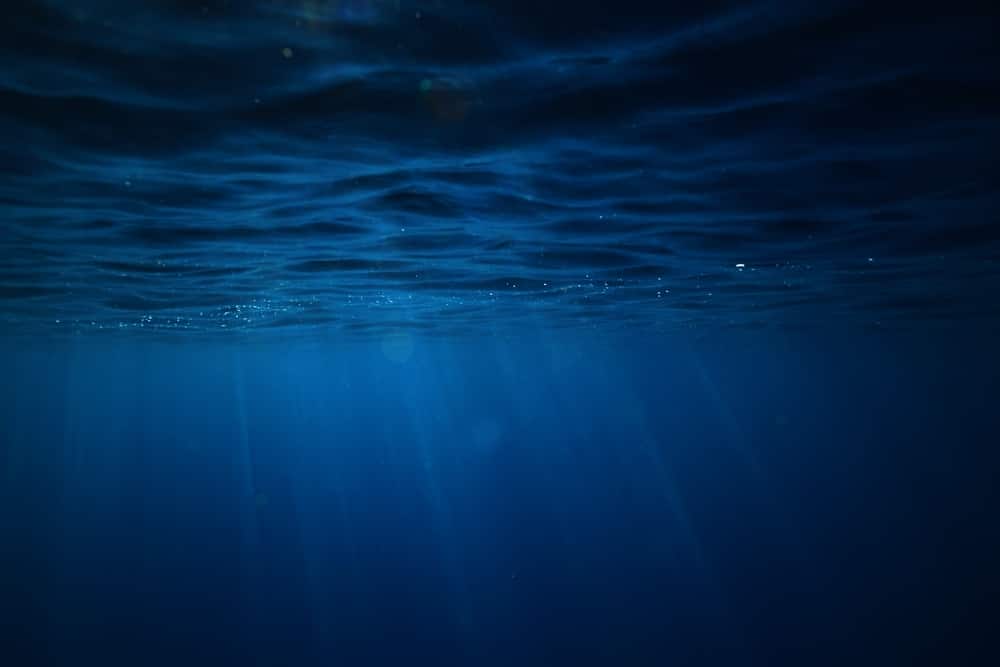
There are not many photos of flashlight fish, so it’s best to check them out at the Aquarium of the Pacific if you want to see these odd fish!
©Kichigin/Shutterstock.com
As intriguing in appearance as they are in name, the splitfin flashlight fish (Anomalops katoptron) uses bioluminescent bacteria to illuminate the sea. The organs containing this bacteria are behind their eyes which gives the illusion of big, bright eyes looking back at the viewer. The ultimate function of this flashlight ability is to help locate prey. As one can probably guess, they are nocturnal creatures and dwell in dark areas in their natural areas. In the aquarium, you can find them in the Glowing Reef exhibit in the Tropical Pacific Gallery.
Zebra Sharks
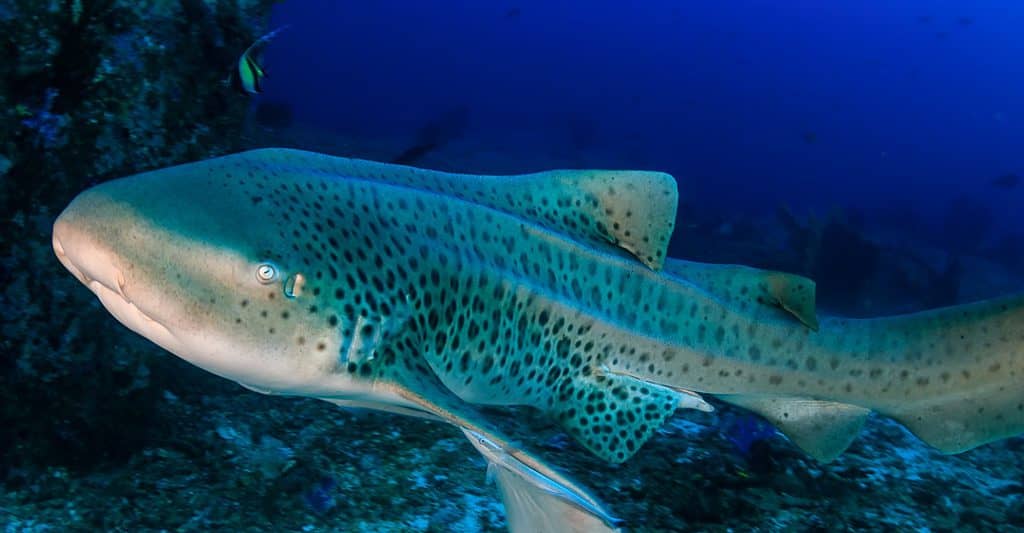
The common name of this shark in Australia is the
leopard
shark, which seems more fitting given the spots on its body.
©iStock.com/WhitcombeRD
One of the friendliest sharks you’ll meet is a Zebra shark (Stegostoma fasciatum). This shark can be found in two locations of the aquarium: the Shark Lagoon and the Tropical Reef exhibit. Their creamy coloration with dark spots or open circles contrasts the appearance of most sharks, giving this one a striking and unusual appearance. Its wide (but small) mouth and tiny eyes also make it appear much less threatening than what most people conjure up in their heads when they think of sharks.
Epaulette Shark

The epaulette shark dwells in shallow waters and is most active at night.
©wrangel/ via Getty Images
This minuscule shark is available to pet in the Shark Lagoon’s touch pool. One of the most interesting things about this shark, aside from its diminutive size and odd but endearing appearance, is its ability to walk! The epaulette shark (Hemiscyllium ocellatum) uses its fins to “walk” across shallow areas, most often to reach food. They mostly hang out in shallow areas like tide pools. Due to this, it has some adaptations to deal with low tide, aside from walking on its fins. The epaulette’s ability to survive under low levels of oxygen for about an hour is one of these adaptations.
Bat Ray
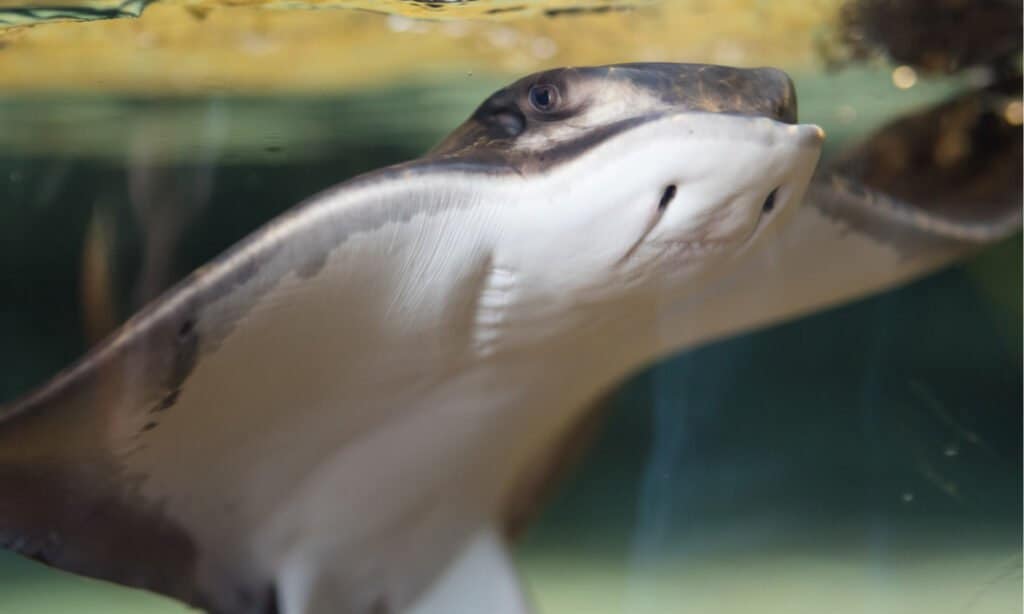
Rays are a family of animals closely related to sharks.
©Claire Brighten/Shutterstock.com
Another inhabitant of the touch pool, the bat ray (Myliobatis californica) uses their wide, triangular fins to swim through the water. Not only do they use their “wings” to get around, but this movement can also uncover prey from underneath the sand. The rays might also bury themselves under the sand. While this isn’t an issue in controlled settings, beachgoers in their native range are told to shuffle their feet in the sand to scare away or uncover these rays to avoid getting stung. The sting from their barb isn’t life-threatening, but is definitely painful!
Pacific Cownose Ray
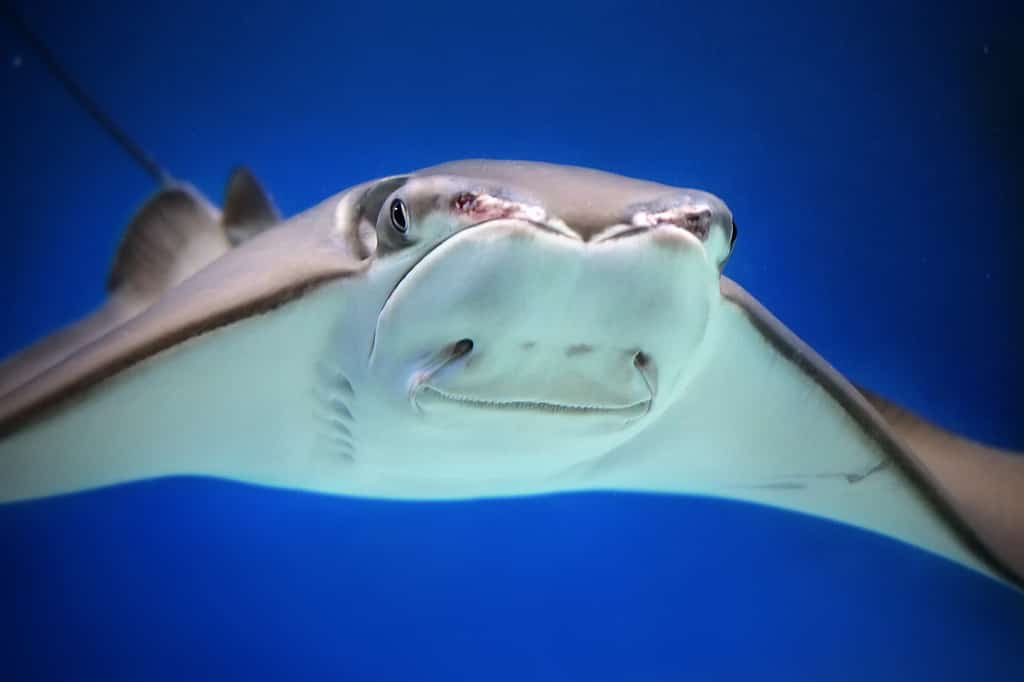
Facing the ray head-on, you can see how the rostrum gives the ray a “cownose” appearance.
©Dudbrain/ via Getty Images
Another cool animal to make it a point to check out is the Pacific cownose ray (Rhinoptera steindachneri). It gets its common name “cownose” from its nasal projections called a rostrum on its face. This species also prefers to travel in schools, which in the wild can look like a migration of birds underwater. You can find this animal in the Tropical Pacific Reef and Shark Lagoon locations in the aquarium.
Harbor Seal

When a seal takes a rest in the water with their body upright and head sticking out, it is known as “bottling”.
©RobsonAbbott/ via Getty Images
Harbor seals (Phoca vitulina sp.) are housed along with sea lions in the Southern California Gallery’s Seals and Sea Lions habitat. This species of seal is native to the western coast of the US and into Mexico and Canada. It, like the sea lion, prefers warm temperatures. Their long whiskers are integral in hunting and navigating the water. Harbor seals are also known for their tenacity, often chasing fish for miles.
California Sea Lions

Groups of California sea lions are a noisy bunch, with their sounds likened to a lion’s roar.
©B Brown/Shutterstock.com
Also found in the Southern California Gallery, California sea lions (Zalophus californianus) are a native animal to the state. They enjoy the warm waters of the coast and can be seen socializing with other members of their herd.
Shows featuring the sea lions and seals take place twice daily where audience members can feast upon tricks by the animals, and the treats they indulge in after a stellar performance.
Staghorn Corals
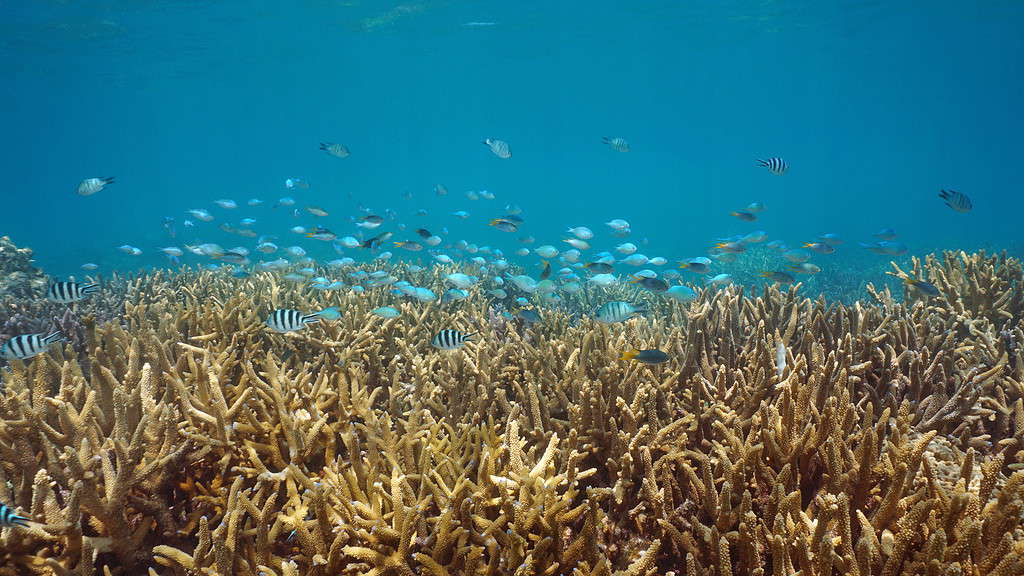
Nearly 400 species of staghorn corals are thought to exist.
©Damocean/ via Getty Images
Some of the coolest animals in the aquarium might not even be on your radar as “animals.” The Aquarium of the Pacific features a Live Coral exhibit located in the Tropical Pacific Gallery, where you can observe and learn about these strange animals.
Staghorn coral (Acropora sp.) are some of the best builders of coral reefs. They can make many shapes and colors to create a beautiful underwater oasis. Corals, like the staghorn coral, are important habitats for many aquatic critters. They can also protect the shoreline from oceanic disruptions or disastrous waves. Most corals have a symbiotic relationship with zooxanthanelles, which photosynthesize to provide energy for the coral colony. They also eat phytoplankton to supplement their energy needs.
Corals are very sensitive creatures. Not only do they not respond well to environmental changes, but they’re also extremely sensitive to being touched. These sensitivities have led to widespread damage to coral reefs.
Final Thoughts
A visit to the Aquarium of the Pacific is sure to open your eyes and hearts to new, interesting, and cool animals found below the surface. Many of the creatures highlighted at the aquarium come with a story to be told about their integral role in their respective ecosystems. Such animals can provide viewers with a new appreciation for how different life is under the sea.
The photo featured at the top of this post is © Guido Benedetto/Shutterstock.com
Thank you for reading! Have some feedback for us? Contact the AZ Animals editorial team.






